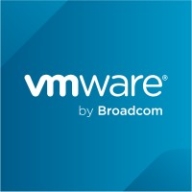

AWS Control Tower and VMware Tanzu Platform compete in the cloud management and multi-account governance category. VMware Tanzu Platform appears to have an upper hand due to its seamless integration with Kubernetes management and existing VMware infrastructure, while AWS is favored for its centralized account and security policy management.
Features: AWS Control Tower is praised for multi-account management, emphasizing compliance and the enforcement of security policies through guardrails. It offers automated templates and centralized access control with single sign-on. VMware Tanzu Platform is notable for its robust Kubernetes management and multi-cloud support, offering seamless integration with existing VMware infrastructure and comprehensive management tools.
Room for Improvement: AWS Control Tower could improve by enhancing integration with more AWS services and offering more customizable guardrails. Users also desire better regional support and a more intuitive interface. VMware Tanzu Platform requires a better GUI, broader integration with third-party tools, and improved disaster recovery features. More detailed app-level tracing and reduced costs are also suggested.
Ease of Deployment and Customer Service: AWS Control Tower is noted for straightforward public cloud deployment and robust customer support, with some users noting lengthy wait times for specialists. VMware Tanzu offers versatile deployment across hybrid, public, and on-premises environments, albeit with more complexity. It receives praise for high-quality customer support.
Pricing and ROI: AWS Control Tower is considered cost-effective, minimizing compliance costs and reducing management workload, but pricing varies by region. VMware Tanzu Platform is perceived as expensive, especially when combined with other VMware tools, making it ideal for larger enterprises. Although higher priced, Tanzu offers significant value for companies requiring integrated cloud management and Kubernetes solutions.
| Product | Market Share (%) |
|---|---|
| AWS Control Tower | 1.3% |
| VMware Tanzu Platform | 1.1% |
| Other | 97.6% |


| Company Size | Count |
|---|---|
| Small Business | 9 |
| Midsize Enterprise | 2 |
| Large Enterprise | 7 |
| Company Size | Count |
|---|---|
| Small Business | 10 |
| Midsize Enterprise | 3 |
| Large Enterprise | 10 |
AWS Control Tower offers the easiest way to set up and govern a new, secure, multi-account AWS environment. It establishes a landing zone that is based on best-practices blueprints, and enables governance using guardrails you can choose from a pre-packaged list.
VMware Tanzu Platform is designed for cloud-native development and management of Kubernetes, CI/CD processes, microservices, and containerized workloads. It supports deployments both on cloud and on-premises, providing centralized management via Mission Control.
VMware Tanzu Platform offers seamless integration with vSphere, ESX, and vSAN, supporting centralized cluster management and lifecycle management. The platform provides a GUI for monitoring CI/CD pipelines and network policies, enhancing multi-tenancy and Day 2 operations. Users can easily manage Kubernetes clusters, monitor applications, and integrate with tools such as GitHub, GitLab, Cloud Foundry, and Azure. It ensures compliance and security for service providers, financial institutions, and businesses.
What are the key features of VMware Tanzu Platform?
What benefits and ROI should users look for in VMware Tanzu Platform reviews?
Industries such as financial institutions, service providers, and businesses requiring rigorous compliance and security deploy VMware Tanzu Platform. These entities benefit from centralized management, streamlined DevOps processes, and integrated tools, enhancing their capabilities in cloud-native developments and containerized workloads.
We monitor all Cloud Management reviews to prevent fraudulent reviews and keep review quality high. We do not post reviews by company employees or direct competitors. We validate each review for authenticity via cross-reference with LinkedIn, and personal follow-up with the reviewer when necessary.